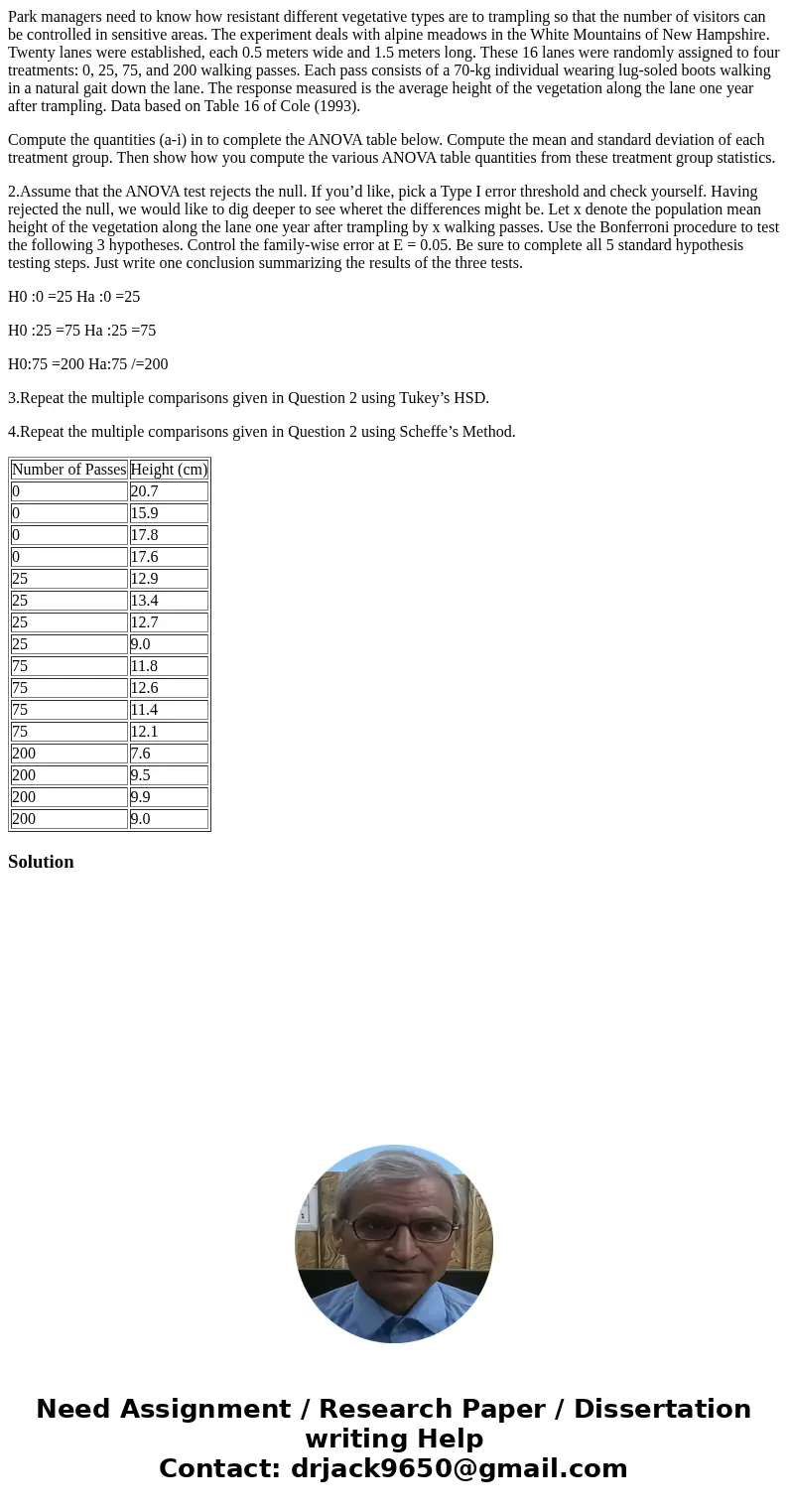Park managers need to know how resistant different vegetativ
Park managers need to know how resistant different vegetative types are to trampling so that the number of visitors can be controlled in sensitive areas. The experiment deals with alpine meadows in the White Mountains of New Hampshire. Twenty lanes were established, each 0.5 meters wide and 1.5 meters long. These 16 lanes were randomly assigned to four treatments: 0, 25, 75, and 200 walking passes. Each pass consists of a 70-kg individual wearing lug-soled boots walking in a natural gait down the lane. The response measured is the average height of the vegetation along the lane one year after trampling. Data based on Table 16 of Cole (1993).
Compute the quantities (a-i) in to complete the ANOVA table below. Compute the mean and standard deviation of each treatment group. Then show how you compute the various ANOVA table quantities from these treatment group statistics.
2.Assume that the ANOVA test rejects the null. If you’d like, pick a Type I error threshold and check yourself. Having rejected the null, we would like to dig deeper to see wheret the differences might be. Let x denote the population mean height of the vegetation along the lane one year after trampling by x walking passes. Use the Bonferroni procedure to test the following 3 hypotheses. Control the family-wise error at E = 0.05. Be sure to complete all 5 standard hypothesis testing steps. Just write one conclusion summarizing the results of the three tests.
H0 :0 =25 Ha :0 =25
H0 :25 =75 Ha :25 =75
H0:75 =200 Ha:75 /=200
3.Repeat the multiple comparisons given in Question 2 using Tukey’s HSD.
4.Repeat the multiple comparisons given in Question 2 using Scheffe’s Method.
| Number of Passes | Height (cm) |
| 0 | 20.7 |
| 0 | 15.9 |
| 0 | 17.8 |
| 0 | 17.6 |
| 25 | 12.9 |
| 25 | 13.4 |
| 25 | 12.7 |
| 25 | 9.0 |
| 75 | 11.8 |
| 75 | 12.6 |
| 75 | 11.4 |
| 75 | 12.1 |
| 200 | 7.6 |
| 200 | 9.5 |
| 200 | 9.9 |
| 200 | 9.0 |
Solution

 Homework Sourse
Homework Sourse